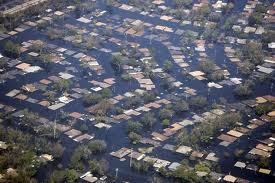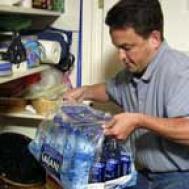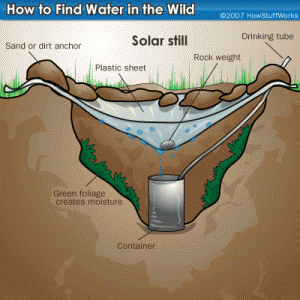- Your Government
-
Our Community
-
- About St. Helens History of St. HelensState of the CityCourthouse Dock Camera
- Local Events City Calendar Citizens Day in the ParkRecreation Activities Discover Columbia County Sand Island CampingKeep It Local CC
- Community Resources City Newsletter City Social Media Emergency Services New Resident InformationProtecting Our Environment
-
-
Business & Development
-
- Local Business Directory Get a Business License City Bids & RFPs Broadband Study
- Business in St. Helens St. Helens Advantages Directions & Transportation Incentives & Financing Resources for Businesses Business Guide Columbia Economic Team Chamber of Commerce
- Current City Projects Waterfront Redevelopment Public Safety Facility Strategic Work Plan
-
-
How Do I?
-
- Apply for a Job Apply for a Committee Find A Park Find COVID Info Find Forms Follow St. Helens - Facebook Follow St. Helens - Twitter Follow St. Helens - YouTube
- Get a Police Report Get a Business License Get a Library Card Get a Building Permit Newsletter Signup Past Public Meetings Pay My Water Bill
- Public Records Request Report a Nuisance Register for Rec Activity Reserve a Park Sign Up for the 911 Alerts Universal Fee Schedule
-
Are you prepared for When an Emergency event occurs?
Do you have an Emergency Water Supply?

 If an earthquake, winter storm, or other disaster strikes our community, you might not have access to food, water and electricity for days or even weeks. Disaster strikes at a moments notice, many times without warning, you probably will not have the opportunity to shop or search for the supplies you and your family will need. Every household should assemble an emergency water supply and emergency food and supplies kit for each member of the family and keep it up to date.
If an earthquake, winter storm, or other disaster strikes our community, you might not have access to food, water and electricity for days or even weeks. Disaster strikes at a moments notice, many times without warning, you probably will not have the opportunity to shop or search for the supplies you and your family will need. Every household should assemble an emergency water supply and emergency food and supplies kit for each member of the family and keep it up to date.
In an emergency, having a supply of clean water is a top priority, for drinking, food preparation and hygiene. Store at least one gallon per person and pet per day.Store at least a three-day supply of water for each member of your family.
Are you ready today for an emergency situation tomorrow?
Finding Alternate Sources of Water
Remember to look for other sources of potable water in and around your home. When your home water supply is interrupted by natural or other forms of disaster, you can obtain limited amounts of water from A) your hot water tank (let it cool down of course) or B) melting ice cubes, (we have bottles of frozen water in our freezer), and C) if you have time and still have water pressure, fill your bathtub with water and use for flushing the toilet, and D) the bathtub becomes a source of water for cleaning dishes or getting water for washing your hands from a sink or dishpan. In many cases, well water is the preferred source of drinking water, however, if it is not available and river or lake water must be used, avoid sources containing floating material and water with a dark color or an odor. Generally, flowing water is of better quality than stagnant water.
Treating Water
Boiling and chemical treatment are two general methods used to effectively disinfect small quantities of filtered and settled water.
Boiling Water
Boiling is the surest method to make water safe to drink and kill disease-causing microorganisms like Giardia lamblia and Cryptosporidium, which are frequently found in rivers and lakes.
These disease-causing organisms are less likely to occur in well water (as long as it has not been affected by flood waters). If not treated properly and neutralized, Giardia may cause diarrhea, fatigue, and cramps after ingestion. Cryptosporidium is highly resistant to disinfection. It may cause diarrhea, nausea and/or stomach cramps. People with severely weakened immune systems are likely to have more severe and more persistent symptoms than healthy individuals.
Water activities that require and do not require boiled water
Water used for activities that require boiling should be brought to a rolling boil for a minimum of 1 minute "BEFORE" adding pasta, vegetables, oatmeal , soup mix, cocoa, coffee etc.
|
REQUIRES BOILING |
DOES NOT REQUIRE BOILING |
|---|---|
| Drinking / Ice Making | Showering / Tub Bathing |
| Washing food without cooking | Hand Washing |
| Adding water to food without cooking | Dish washing and rinsing* |
| Water taken with medications | Laundering |
| Cleaning food contact surfaces | General cleaning and mopping |
| Eye and Face washing | |
| Tooth brushing, Gargling | Pet washing, pet watering, plant watering |
*When washing or rinsing dishes use soap and Clorox in the water. (Heated water is preferred)
Prepare and Store an Emergency Supply of Water
The CDC, EPA, FEMA and Red Cross recommend that the safest and most reliable emergency supply of water is commercially bottled water. Keep bottled water in its original container, and do not open it until you need to use it. Store bottled water intended for drinking and cooking in the original sealed container, in a cool place, out of direct sunlight, and observe the expiration or "use by" date, generally 6 months.
 If you are preparing your own containers of water... it is recommended to purchase food-grade water storage containers from surplus or camping supplies stores to use for water storage. If you decide to re-use storage containers, choose two-liter plastic soft drink bottles – not plastic jugs or cardboard containers that have had milk or fruit juice in them. The reason is that, milk protein and fruit sugars cannot be adequately removed from these containers and provide and environment of bacterial growth when water is stored in them.
If you are preparing your own containers of water... it is recommended to purchase food-grade water storage containers from surplus or camping supplies stores to use for water storage. If you decide to re-use storage containers, choose two-liter plastic soft drink bottles – not plastic jugs or cardboard containers that have had milk or fruit juice in them. The reason is that, milk protein and fruit sugars cannot be adequately removed from these containers and provide and environment of bacterial growth when water is stored in them.
Water Preparation Techniques
Preparing Containers
Thoroughly clean the bottles with dishwashing soap and hot water, and rinse completely so there is no residual soap or soft drink residuals.
Additionally, for plastic soft drink bottles sanitize the bottles by adding a solution of 1 teaspoon of non-scented liquid household chlorine bleach to a quart of water.
Swish the sanitizing solution in the bottle so that it touches all surfaces.
After sanitizing the bottle, thoroughly rinse out the sanitizing solution with clean water
Examine the physical condition of the water. NOTE: When emergency disinfection is necessary, disinfectants are less effective in cloudy, murky or colored water.
Steps for filtering and disinfecting your drinking water supply.






- Filter murky or colored water through clean cloths, coffee filters or allow it to settle. It is better to both settle and filter.
- After filtering until it is clear, or allowing all dirt and other particles to settle, draw off the clean and clear water for disinfection. Water prepared for disinfection should be stored only in clean, tightly covered, containers, not subject to corrosion.
- Boil filtered and settled water vigorously for a minimum of one minute (at altitudes above one mile, boil for three minutes).
- To improve the flat taste of boiled water, aerate it by pouring it back and forth from one container to another and allow it to stand for a few hours, or add a pinch of salt for each quart or liter of water boiled. *Mental Note to Remember*: 1/8 teaspoon and 8 drops are about the same quantity
- If the strength of the bleach is unknown, add ten drops per quart or liter of filtered and settled water. Double the amount of chlorine for cloudy, murky or colored water or water that is extremely cold.
- Mix the treated water thoroughly and allow it to stand, preferably covered, for 30 minutes.
- The water should have a slight chlorine odor. If not, repeat the dosage and allow the water to stand for an additional 15 minutes. If the treated water has too strong a chlorine taste, allow the water to stand exposed to the air for a few hours or pour it from one clean container to another several times.
| Available Chlorine | Drops per Qt / Gallon of clear water | Drops per liter of clear water |
| 1% | 10 drops per Quart - 40 per Gallon | 10 per liter |
| 4 - 6% | 2 drops per Quart - 8 per Gallon (1/8 tsp) | 2 per liter |
| 7 - 10% | 1 drop per Quart - 5 per Gallon | 1 per liter |
| 8.25% |
3/8 teaspoon bleach (or three 1/8th teaspoons) per 5 Gallons |
*For cleaning, sanitizing, and disinfecting NON-FOOD surfaces such as bathtubs, sinks, faucets, tile, plastic toys, potty chairs, high chairs, changing tables, floors, appliances, counter-tops, garbage cans, walls, light switches, etc..Use ½ cup of Clorox® Regular-Bleach per GALLON of water. Allow solution to contact surface for at least 5 minutes for optimum effectiveness. Afterward, rinse and-or air dry.
Filling Water Containers
Fill the bottle to the top with regular tap water. If the water you are using comes from a well or water source that is not treated with chorine, add two drops of non-scented liquid household chlorine bleach to each gallon of water.
Tightly close the container using the original cap. Be careful not to contaminate the cap by touching the inside of it with your fingers.
Write the date on the outside of the container so that you know when you filled it. Store in a cool, dark place.
Replace your personally stored water every six months. Repeat cleaning and sanitizing the container or bottle before refilling.
Storing Water
Store water in a cool, dark place in your home, each vehicle and at your workplace. Preferably, in store-bought, factory-sealed water containers. Alternately, in food-grade quality containers made for storing water and available from sporting goods and surplus stores and other retailers. These containers must be thoroughly washed, sanitized and rinsed, as well as the water you store in them. During a flood if the water is from your tap, may need to first boil the water and then filter and disinfect the water before being stored. Ask your public health service or water provider for information on whether and how to treat the water. Follow those instructions before storing any water.
If boiling is not possible, chemical disinfection of filtered and settled water collected from a well, spring, river, or other surface water body will still provide some health benefits and is better than no treatment at all.
Types of Chemical Treatment as a Method of Disinfection
When boiling is not practical, certain chemicals will kill most harmful or disease-causing organisms. For chemical disinfection to be effective, the water must be filtered and settled first. Chlorine and iodine are the two chemicals most commonly used to treat water. They are somewhat effective in protecting against exposure to Giardia, but may not be effective in controlling more resistant organisms like Cryptosporidium. Chlorine is generally more effective than iodine in controlling Giardia, and both disinfectants work much better in water between 56 and 68 degrees F.
You can use a non-scented, household chlorine bleach that contains a chlorine compound to disinfect water. Do not use a "scented", "ThickCling" or "Splash-Less" bleach to disinfect drinking water. Clorox has been phasing out their old Regular Bleach formula and have introduced “Concentrated Clorox® Regular Bleach”, which is the same Clorox bleach product, just more concentrated. The concentration of sodium hypochlorite has increased from 6% to 8.25%. Follow the procedure written on the label. When the necessary procedure is not given, find the percentage of available chlorine on the label and use the information in the table above as a guide. (Remember, 1/8 teaspoon and 8 drops are about the same quantity, and 76 drops is a teaspoon.)
Granular Calcium Hypochlorite to Disinfect Water
Add and dissolve one heaping teaspoon of high-test granular calcium hypochlorite (approximately ¼ ounce) for each two gallons of water, or 5 milliliters (approximately 7 grams) per 7.5 liters of water. The mixture will produce a stock chlorine solution of approximately 500 milligrams per liter, since the calcium hypochlorite has available chlorine equal to 70 percent of its weight. To disinfect water, add the chlorine solution in the ratio of one part of chlorine solution to each 100 parts of water to be treated. This is roughly equal to adding 1 pint (16 ounces) of stock chlorine to each 12.5 gallons of water or (approximately ½ liter to 50 liters of water) to be disinfected. To remove any objectionable chlorine odor, aerate the disinfected water by pouring it back and forth from one clean container to another.
Chlorine Tablets to Disinfect Filtered and Settled Water
Chlorine tablets containing the necessary dosage for drinking water disinfection can be purchased in a commercially prepared form. These tablets are available from drug and sporting goods stores and should be used as stated in the instructions. When instructions are not available, use one tablet for each quart or liter of water to be purified.
Tincture of Iodine to Disinfect Filtered and Settled Water
Common household iodine from the medicine chest or first aid kit may be used to disinfect water. Add five drops of 2 percent U.S. or your country's approved Pharmacopoeia tincture of iodine to each quart or liter of clear water. (For cloudy water add ten drops and let the solution stand for at least 30 minutes.)
Iodine Tablets to Disinfect Filtered and Settled Water
Purchase commercially prepared iodine tablets containing the necessary dosage for drinking water disinfection at drug and sporting goods stores. Use as stated in instructions. When instructions are not available, use one tablet for each quart or liter of filtered and settled water to be purified.
Remember: Only use water that has been properly disinfected for drinking, cooking, making prepared drink or for brushing teeth.
Distillation Methods
The Pot
Fill a pot halfway with water. Tie a cup to the handle on the pot's lid so that the cup will hang right side up when the lid is upside-down. Make sure the cup is not dangling in the water. Boil the water for 20 minutes. The water that drips from the lid to the cup is distilled.
The Solar Still
Here is a very simple solar still with a plastic film draped over a dug hole in the soil which collects the moisture from the ground onto the plastic sheet, which is then being collected in a clean jar in the bottom of the hole. The plastic sheet has a small stone in the center of the film to create the "funnel" effect to catch the condensing water. One more idea is to use a large mouth, clean glass jar. Fill a glass with water and place inside the jar, perhaps suspend the glass from the lid of the jar. Place the jar on a mirror, set in the sun and the sun evaporates the liquid in the glass, the distilled water accumulates on the inside of the jar and runs down the inside of the jar and collects on the bottom of the jar.
Resources
Other preparedness materials are available at www.fema.gov, www.redcross.org, as well as www.ready.gov. to assist you and your family prepare for unexpected disasters.
Columbia Alert Network - CAN
There is in place a E911 database which includes all landline telephones throughout Columbia County. The data is uploaded to the Columbia County Map, connecting the landline phone number(s) to your address.
There is also in place a Community Sign Up, for citizens who use cell phones as their only way of contact. Some may want to include their cell phone(s) for notification in addition to their landline phones. These contact numbers are manually added to the CAN (Columbia Alert Network) system and for any notification, the community list is gone through and finds the people who fall in the selected area that is in alert and are active, those registered cell/VoIP, and email addresses as well.
To be added to the Columbia Alert Network, click the link on the link below:
http://www.columbia911.com/general/page/have-you-registered-can
Besides an Emergency Water Supply, do you have enough Food for at least a 3 day supply?
To assist you in putting together your food supply kit, please see the article "preparing your bug out or grab n go bag". You will find a list of items for your kit or bag,
Additional information can also be found about disinfecting water in the article, "What is a Boil Water Notice"
 Do you have any suggestions or comments?
Do you have any suggestions or comments?
or call 503-397-1311

